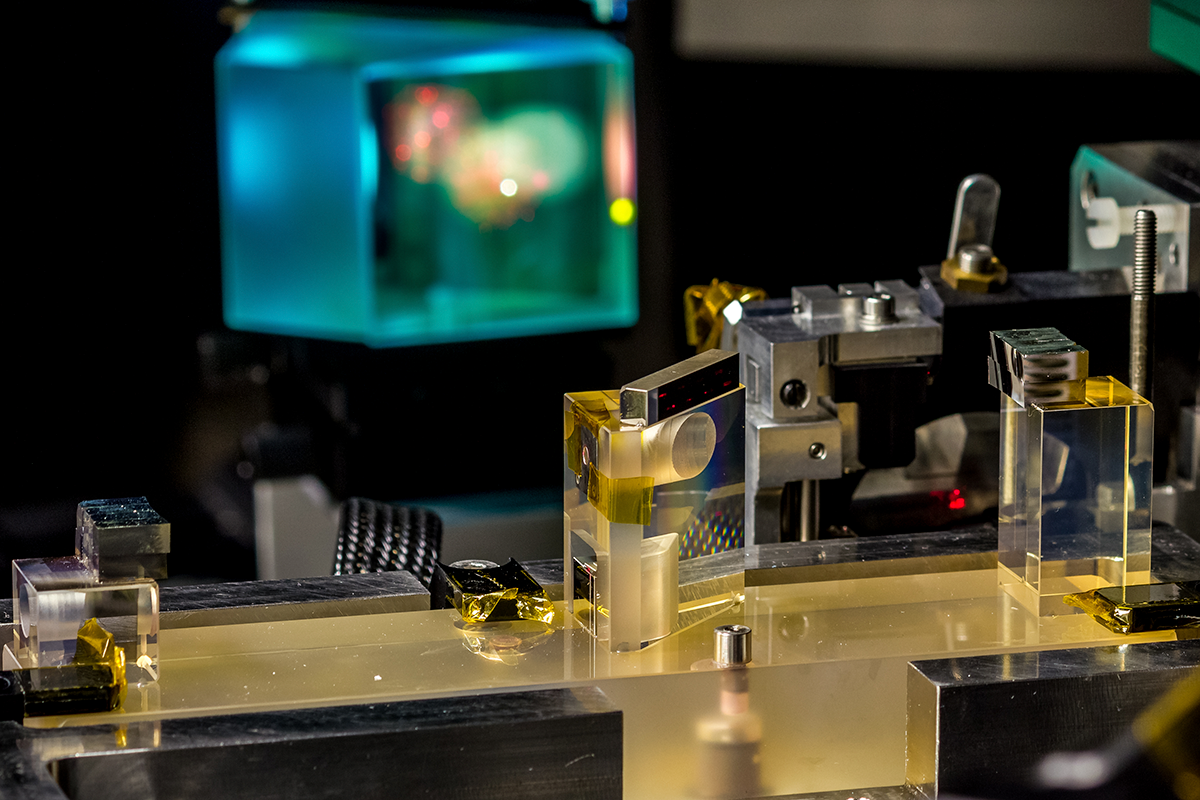Integral Field Units will have a prominent role in EST. Two different technologies are being explored for these intruments: image slicers and microlens arrays.
 Image slicer of the GRIS spectropolarimeter installed on the GREGOR telescope (Tenerife, Spain). This was built as a prototype for EST, although it does not fulfil all of EST requirements. Still, it is operative at GREGOR. The slicer is located in the cube under the central structure. / Carlos Martín Díaz (IAC).
Image slicer of the GRIS spectropolarimeter installed on the GREGOR telescope (Tenerife, Spain). This was built as a prototype for EST, although it does not fulfil all of EST requirements. Still, it is operative at GREGOR. The slicer is located in the cube under the central structure. / Carlos Martín Díaz (IAC).
As we saw in the EST instrument suite, EST will have four Integral Field Units (IFUs), one in each optical arm. In fact, EST will be the only solar telescope that will offer this IFU multi-wavelength capability.
Integral Field Units provide 3D information of the Sun (both spectral and 2D spatial information simultaneously). In a nutshell, these instruments divide the field of view in several long and narrow stripes. The different stripes are reordered and directed to the slit of a classical spectrograph, which generates independent spectra for all of them at once.
The spectra are rearranged into a datacube containing the 2D image, to which spectral information is added contributing a third dimension to the data. This technique is called integral field spectroscopy and allows to simultaneously record the spectra of a bidimensional field of view.
"The spectrum gives us temperatures, velocities, magnetic fields.... but the spectrograph sees through a slit, and yet the surface is evolving constantly, so we miss what is going on outside of the slit. In addition, the solar structures are very large and cannot be seen in their entirety through the slit. However, integral field spectroscopy allows you to observe the whole field and its evolution", explains Manolo Collados, EST Coordinator.
Image slicers
There are different types of IFUs. The European Solar Telescope will use either image slicers or microlens arrays. The EST team is actually researching both technologies.
The Instituto de Astrofísica de Canarias is leading the development of image slicers for the IFUs. These slicers are built of small sheets (facets) held together by chemical adhesion. Their mission is to "slice" the image and feed those slices to the spectrograph.
 Schematic diagram of an IFU image slicer. / Source: own elaboration based on figures 7 and 8 from Calcines et al. (2013).
Schematic diagram of an IFU image slicer. / Source: own elaboration based on figures 7 and 8 from Calcines et al. (2013).
The team already built a prototype during a previous project (it is operative at GREGOR), although it did not fulfil all of EST requirements: "The main problem we found was that the width of the slicer facets was too large, about 100 microns when for EST we need about 30-50. These technologies are very new, and we have never made slicers so small before" explains Manolo Collados.
Currently, the team is testing two different materials for the slicers: glass and metal. The former was more difficult to build in a small size, whereas the latter was easier to miniaturise but harder for optical quality. Both options are being developed together with technological companies (Winlight Systems and Canon, respectively), and both will be built in order to test their performance. The prototypes will be ready by 2022 (2021 is devoted to develop the rest of the optical components of the IFUs).
More information:
